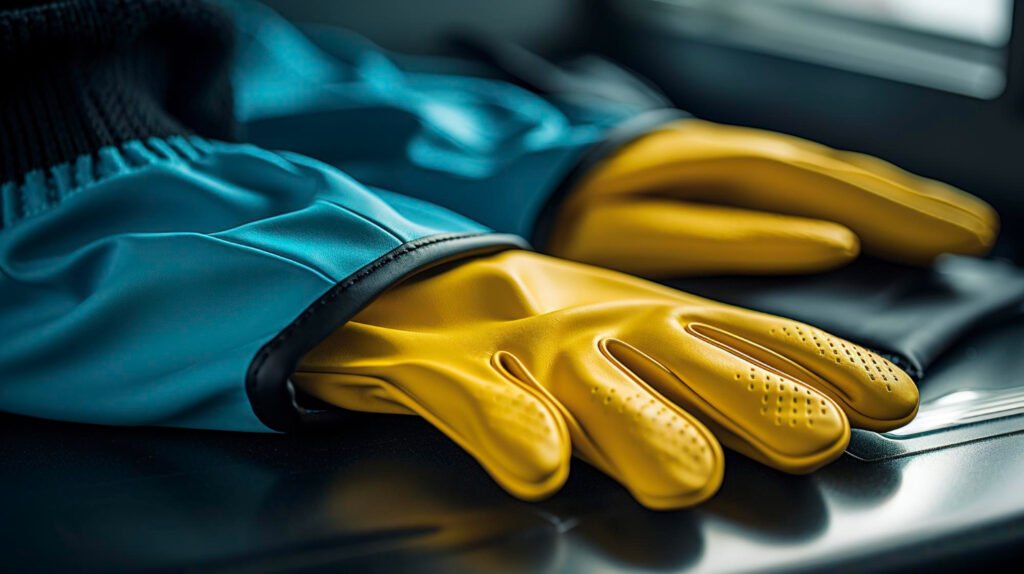
“Prevention is better than cure”
Remember the last time you were on your iPhone and got hurt by a knife while making your favourite salad? At times like this, a band-aid would cure you, but if you are an industry worker, the damages can sometimes be permanent and catastrophic for your life.
Thus, to follow the adage “prevention is better than cure”, one must be well-equipped with tools to safeguard nature’s most precious gift; our body.
Cut-resistant gloves are a revolutionising innovation in the industrial sectors, giving workers their share of freedom and safety, and enhancing productivity.

The need for cut-resistant gloves
“…often occurring accidents are a big hindrance to a company’s productivity and growth.”
Accidents involving cuts and lacerations of hands and other body parts are common in various workplaces. These cuts pose a chance of deeper skin infection later, even more so, when the abrasion material is rusty or coated with hazardous chemicals. The injuries lead to significant pain, high medical expenses, and downtime. Industrial places like mining sectors and steel manufacturing units are filled with moisture due to excessive heat, invariably causing infection and itching post-cut and abrasion.
Looking beyond the individualistic challenges, these often occurring accidents are a big hindrance to a company’s productivity and growth. An industrial board taking care of its staff, by ensuring their safety in even trivial areas, lays a positive perception on the labor class, forming an emotional bond later.
Fortunately, with the innovation of cut-resistant gloves, we are able to minimize the risk of such injuries, by providing a protective barrier against sharp objects, abrasions, and punctures.

Features and Construction of cut-resistant gloves
-What should one expect?
“ The purpose of the gloves does not stop by providing mere protection, but also by ensuring unhindered performance,…..”
For what?
Cut-resistant gloves are designed to withstand varying levels of force and protect against cuts from sharp edges, blades, and materials. Depending on the extent of exposure an activity demands, the nature and withstanding capacity of the gloves also have to change.
From what?
These ever protecting cut-resistant gloves are made using a combination of high-performance materials, including Kevlar®, Dyneema®, and other synthetic fibers that offer exceptional cut resistance. The purpose of the gloves does not stop by providing mere protection, but also by ensuring unhindered performance, similar to that of without gloves. These materials are lightweight, and flexible, and provide an excellent balance between protection and dexterity, thus maintaining users’ comfort.
The standards?
Different gloves offer varying levels of cut resistance, categorized by ANSI/ISEA (American National Standards Institute/International Safety Equipment Association) and EN (European Norm) standards. The standards use a numeric rating system to classify gloves based on their ability to withstand cuts, with higher numbers indicating higher resistance.
Understanding the level of protection required for your specific task is essential to ensure you choose the appropriate cut-resistant glove. While some gloves focus primarily on cut resistance, others offer additional features like impact protection, heat resistance, and chemical resistance, depending on the nature of the work being performed.
To help you choose your perfect cut-resistant armour, we’ve made a dedicated section at the end of the blog!

We need cut-resistors everywhere
-So you can chop hassle-free!
“Cut-resistant gloves are not limited to just professional use.”
1. Industrial Applications: obviously, this is the most obvious sector popping up first in our heads. Cut-resistant gloves find widespread use in industrial environments, including manufacturing, construction, metalworking, and handling sharp tools or machinery. They protect workers from potential hazards, such as sharp edges, glass shards, metal burrs, and other abrasive materials.
2. Food Processing and Kitchen Safety: In food processing and preparation, where sharp blades and knives are commonplace, cut-resistant gloves are vital to protect against accidental cuts and injuries. They provide an added layer of safety, especially in industries like butchery, fish processing, and culinary arts.
3. DIY and Home Improvement: Whether you’re working on a home renovation project or simply engaging in DIY activities, cut-resistant gloves can prevent accidental injuries from power tools, saws, and sharp objects. They offer peace of mind and allow you to work with confidence.
4. Recreational Activities: Cut-resistant gloves are not limited to professional use. Outdoor enthusiasts, such as hunters, fishermen, and gardeners too, can benefit from the added protection against potential cuts and abrasions while handling equipment or working with sharp objects.
Choosing the Right Cut-Resistant Gloves
-As we promised!
1. Determine the Level of Protection Required: Assess the potential hazards and risks involved in your specific task to choose gloves with an appropriate level of cut resistance. Look for gloves that meet or exceed the relevant safety standards.
2. Proper Fit: Ensure the gloves fit your hands properly for maximum dexterity and comfort. Too tight or too loose is a big no-no. Ill-fitting gloves can compromise your grip and increase the risk of accidents.
3. Maintenance and Inspection: Regularly inspect your gloves for signs of wear and tear. Replace them if they become damaged, as compromised gloves may not provide the same level of protection. Follow the manufacturer’s instructions for cleaning and maintenance to extend the lifespan of your gloves.
4. Complementary Safety Measures: Remember that cut-resistant gloves are just one aspect of hand protection. When necessary, use additional personal protective.